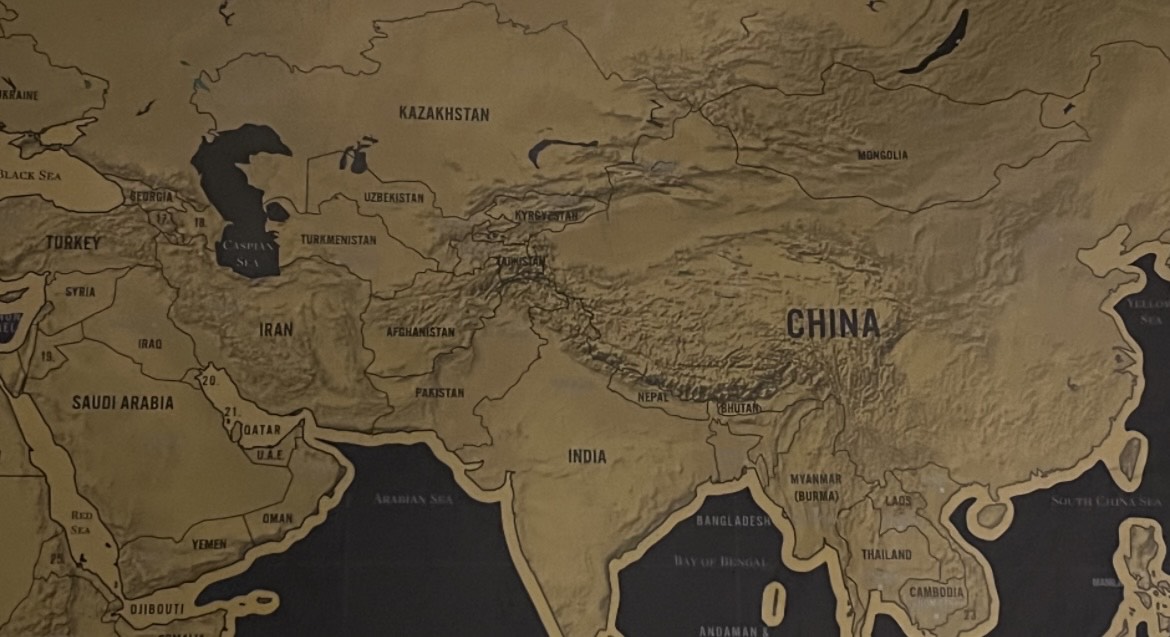Asia is no stranger to war. For decades, the Middle East has been nothing short of an active war zone. South and Southeast Asia have been victims of some of the most brutal periods of colonialism leading to many modern-day crises. Terrorism and famine have taken the lives of men, women, children, and elders. The citizens of these impoverished countries are left almost completely defenseless. Civil war in Yemen has resulted in a myriad of humanitarian crises. Food and water are scarce, the underdeveloped infrastructure is resulting in more issues. Myanmar’s ongoing Rohingya Genocide is continuing to take the lives of thousands as the government attempts to rid the country of its Muslim population. Armenia and Azerbaijan are once again at battle over the Nagorno-Karabakh territory. The Azerbaijani invasions resulted in the displacement of thousands of Armenians who lived in the area. As war, genocide, famine, and poverty rise, humanitarian aid only strays farther from reality. Here is a breakdown of the history leading up to present-day conflicts:
Yemen
A civil war in Yemen continues to purge the country. 80% of the population is in dire need of humanitarian aid, according to the United Nations. An estimated 377,000 people have died due to both direct and indirect causes of the war. Indirect causes include starvation, dehydration, and illness. 4.5 million have been displaced and are seeking refuge. More than 11,000 children have been killed. More are suffering from extreme malnutrition. According to the UN, 4 children die every day due to the conflict. These are only the deaths reported by the UN, it is most likely much higher.
The fighting began in 2014 when the Islamic rebel movement known as the Houthi took advantage of the unstable Yemeni government by capturing the province of Saada in Northern Yemen. With help from the former president: Ali Abdullah Saleh, they took control of the capital city of Sanaa. Saleh was the president since the unification of North Yemen and South Yemen in 1990 but was forced to give up his role due to the uprising and protests during the Arab Spring. This drives President Abdrabbuh Mansur Hadi to flee the country while being persecuted by Houthi members.
In response to the Houthi taking control over Yemen, Saudi Arabia, backed by the US, UK, and France, began sending airstrikes into Yemen in an attempt to bring back Hadi’s rule. Saudi Arabia feared that Iran and Yemen would gain too much power. Houthi is a Shia Muslim organization, Iran is one of the few Shia-majority countries. The Sunni-Shia divide is a main component of the war. Hadi came back to Yemen after Saudi forces recaptured the city of Aden in Southern Yemen. Saleh was killed by the Houthi in 2017 for committing acts of treason. The Houthis controlled most of Yemen but still faced opposition from the Saudi coalition.
Multiple battles have been fought between the Houthi and the Saudi coalition. Ceasefires have been held but are quickly disregarded as cities get captured, lost, and recaptured. In 2021, Houthi launched an attack in Marib, the last remaining Yemeni stronghold. They also conducted missile strikes in Saudi Arabia which resulted in Saudi Arabia increasing their attacks in the capital city. Multiple attacks similar to this one occurred over the past 2 years. The conflict had a drastic effect on the civilians. More and more are dying each day, and poverty is only rising. The people of Yemen are in desperate need of humanitarian aid.
Recently, since the start of the Israel-Hamas War, the Houthis have carried out many attacks on the IDF. They took over multiple Israeli ships in the Red Sea and continued to show support for Hamas.
Myanmar
Myanmar is a “textbook example of ethnic cleansing” as described by the United Nations. The Rohingya are an ethnic minority in Myanmar. They are the largest Muslim population in the predominantly Buddhist country, residing there for generations. Despite this fact, they are not recognized as an official ethnic group ever since they were denied citizenship in 1982. This makes them the largest stateless population in the world. The largest exodus occurred in August of 2017 when 742,000 people (half of them children) were forced to flee to Bangladesh after their villages were burned down. Thousands died. According to the United Nations, 52% of the refugees are children. 51% are women and young girls, many of whom are experiencing sexual violence. More than 1 million Rohingya have fled Myanmar since the 1990s. The majority are forced into some of the most densely populated camps in Bangladesh. These camps lack proper sanitization, leading to outbreaks of diseases like malaria and hepatitis. More than 960,000 people live in these conditions. The United Nations described the Rohingya people as “the most persecuted minority in the world”.
How the Conflict Started:
The nation of Burma (later to be renamed Myanmar) was declared an independent state after the British withdrew from the area in 1948 after decades of colonialism. The new government regarded all citizens as equal, including Rohingyas. Many members of the parliament consisted of Rohingya. However, this democratic government was quickly overthrown by the Burmese military. They took complete control over the country and enabled a single-party rule. The new military-led government created laws that limited the rights of foreigners from areas such as India, China, and Bangladesh as well as other minorities.
In 1974, the military began to take away the national ID cards from the Rohingya that confirmed their citizenship. Soldiers began to assault and terrorize them during this time. In 1982, they officially revoked the Rohingya citizenship. The military continued to stay in power despite protests to bring back democracy.
In 1991, the military carried out Operation Pyi Thaya, meaning Operation Clean and Beautiful Nation. Soldiers killed, raped, assaulted, and destroyed the homes of Rohingya causing 250,000 people to flee to Bangladesh. The harassment continued for the following years. A group called Nasaka was created to persecute the Rohingya near the border of Bangladesh.
In the 2010s, fights between Buddhist and Muslim communities broke out and led to state-supported violence and hate against Rohingya. Nationalist monk groups see the Rohingya as a danger or threat to the Buddhist identity. Monk groups such as MaBaTha spread the hate of Muslims in the country. Many similar organizations also share the goal of spreading hate speech. In 2016, a group of Rohingya attacked a group of police and killed 9 of them to which the Burmese military once again responded with mass killing and rape as well as more destruction of their villages. 86,000 people were displaced after this incident.
In 2017 a Rohingya rebel group (known as the Arakan Rohingya Salvation Army) started to attack military posts in Rakhine State, an area in West Burma where the majority of the violence occurred. The Burmese military responded by burning hundreds of villages and killing an estimated 9,000 people. This led to the biggest exodus that landed 960,000 people in refugee camps with little aid. 600,000 still remain in Myanmar under the rule of their oppressors. For the past 5 years, no justice has been given to the victims, nor has the violence come to an end.
Armenia-Azerbaijan Conflict
After a few years of somewhat relative peace, the Nagorno-Karabakh conflict has started up again. On September 19th, 2023, Azerbaijan launched a large military offensive into the territory known as Norgrono-Karbakh. It is a land-locked region in the Caucasus Mountains. The area has been a territory of Azerbaijan since 2020. However, it is home to around 120,000 ethnic Armenians. 100,000 were forced to flee into Armenia after the attack. That is 80% of the population in Norgon-Karabakh. 200 died. There have been 2 official Nagorno-Karabakh wars since the fall of the Soviet Union which ruled both groups. Both countries disputed the land. These disputes resulted in the deaths and displacement of thousands. Prime Minister of Armenia, Nikol Pashinyan, has called this an act of ethnic cleansing.
The Soviet Union and the first war
In 1923, Nagorno-Karabakh was established by the Soviet Union. 95% of the population was ethnically Armenian, but it was under the control of the Azerbaijan Soviet Socialist Republic. In the late 1980s, resolutions were passed in an attempt to join the Republic of Armenia. Tensions arose from this but did not shift into violence until after the collapse of the Soviet Union in 1991. After the collapse, Nagorno-Karabakh was officially independent. The 2 countries fought for control over the territory. 30,000 people were killed. This was the First Nagorno-Karabakh War. Armenia won control of the territory in 1993. It ended after Russia, which was a strong ally of Armenia, negotiated a ceasefire. The ceasefire resulted in the independence of the territory again with its own self-proclaimed government. However, it was incredibly dependent on the Armenian economy and military.
The Second Nagorno-Karabakh War
After the ceasefire, there was a period of relative peace. However, in the 2010s many border clashes occurred. Attack drones and bomb shelling resulted in hundreds of deaths. In September of 2020, the Second Nagorno-Karabakh War erupted. It started at the border between Azerbaijan and Norgno-Karba. More than 7000 people were killed in the battle. The war lasted 6 weeks before Russia negotiated another ceasefire. Azerbaijan gained back the majority of the territory after the war.
Present-Day Conflict and Concerns about Foreign Intervention
After the attack on September 19th, tensions continued to rise. Thousands have been and are continuing to be displaced. The exact death toll is unknown. Estimates vary in large ranges. One main concern is the fact that Russia is legally supposed to defend Armenia with its military, but has not been doing so. For the past 2 Nagorno-Karabakh Wars, Russia provided support for Armenia. However, with Russia’s main focus on the invasion of Ukraine, Armenia is no longer receiving the same assistance from the major military power. They are left almost completely defenseless against the violence committed by Azerbaijan’s military. Furthermore, Turkey, another major power, has pledged to support Azerbaijan. This means that Armenia has very little power against these ongoing military advances. Unless major foreign assistance and support is given to Armenia’s military, the country’s lack of defense will surely lead to catastrophe.
Sources:
https://www.bbc.com/news/world-middle-east-44466574
https://www.cfr.org/global-conflict-tracker/conflict/war-yemen
https://www.hrw.org/world-report/2023/country-chapters/yemen
https://www.aljazeera.com/news/2023/4/11/a-timeline-of-yemens-slide-into-conflict-and-war
https://exhibitions.ushmm.org/burmas-path-to-genocide/timeline
https://exhibitions.ushmm.org/burmas-path-to-genocide/chapter-1
https://www.unrefugees.org/news/rohingya-refugee-crisis-explained/#:~:text=In%20August%202017%2C%20armed%20attacks,to%20reach%20safety%20in%20Bangladesh.
https://www.bbc.com/news/world-asia-41566561
https://www.cfr.org/backgrounder/rohingya-crisis
https://www.cfr.org/global-conflict-tracker/conflict/nagorno-karabakh-conflict
https://www.nytimes.com/article/armenia-azerbaijan-clashes.html



